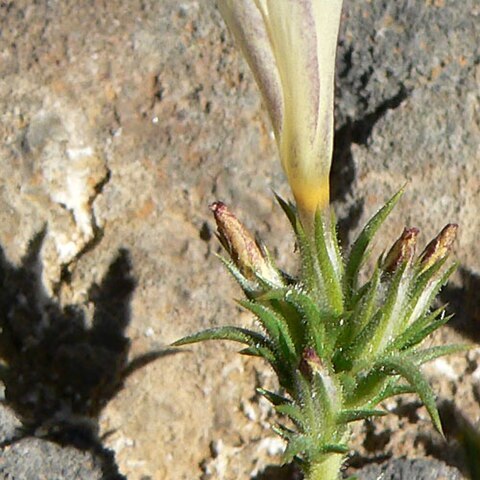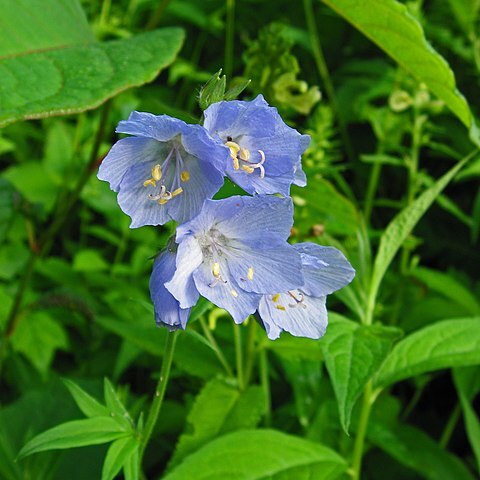Annual or perennial herbs, less often climbing (e.g. Cobaea) and woody shrubs (e.g. Huthia, not in Australia) or small trees (Cantua, not in Australia), often with a disagreeable scent; hairs multicellular and uniseriate, eglandular or with glandular hairs, seldom totally glabrous. Leaves alternate or opposite (e.g Phlox, not in Australia), simple, palmate or pinnate (Cobaea), sessile or petiolate; stipules absent. Inflorescences terminal cymose clusters or dense heads, or rarely flowers solitary in axils (Cobaea). Flowers bisexual, actinomorphic or sometimes zygomorphic (e.g. some Loeselia species, not in Australia), hypogynous. Sepals (4) 5 (6), usually connate to form a tube or rarely ± free (Cobaea), tube herbaceous throughout and papery in fruit or with herbaceous midnerves separated by hyaline membranes between midnerve, the apices often pungent, persistent. Petals (4) 5 (6), connate into a salveriform or 2-lipped corolla. Stamens (3–) 5 (6), antesepalous, the filaments adnate to the corolla, sometimes at different levels; anthers tetrasporangiate, dithecal, basifixed to dorsifixed, dehiscing by longitudinal slits. Nectary disc usually always present and surrounding the ovary. Gynoecium of (2) 3 (4) connate carpels. Ovary superior, with (2) 3 (4) locules; placentation axile; styles 1, apical, simple; stigma lobes usually separate (as many as carpels), (2) 3. Ovules 1–many per locule. Fruit a loculicidal or sometimes septicidal (Cobaea) capsule, sometimes explosively dehiscent (Collomia), rarely indehiscent. Seeds globose, ovoid or fusiform, the surface smooth or pitted, wrinkled or angled, sometimes with marginal wings (e.g. Cobaea), mucilaginous when moistened; endosperm copious, oily, or sometimes scant to absent.
More
Herbs annual or perennial, rarely subshrubs or vines. Leaves alternate or opposite, sessile to petiolate, simple, pinnatifid to palmately lobed, or compound. Inflorescences determinate, corymbose, paniculate, or capitate, or flowers solitary. Flowers (4-or)5-merous. Calyx gamosepalous, cylindric to campanulate; tube herbaceous throughout and papery in fruit or with herbaceous midveins separated by translucent membranes distended or ruptured in fruit; lobes often scarious margined. Corolla gamopetalous, actinomorphic or zygomorphic, rotate to funnelform or salverform; lobes overlapping in bud. Stamens inserted at same or different levels on corolla at base, alternate with corolla lobes, exserted to included; filaments equal to unequal, filiform. Ovary superior, (2-or)3-locular, placentation axile; ovules 1 to many per locule. Style 1; stigma lobes (2 or)3. Fruit a capsule. Seeds globose, ovoid, or fusiform, sometimes winged, often sticky when wet.
A number of species are cultivated as ornamentals for their showy flowers such as Cobaea scandens, Gilia, Phlox and Polemonium. Cantua buxifolia (Qantu) is the floral emblem of Peru, and was sacred to the Incas (Wilken 2004). The indigenous people of north America used species of Ipomopsis, Loeselia and Polemonium as a soap substitute. In Mesoamerica the flowers of Cobaea were used to treat cough (Wilken 2004).


